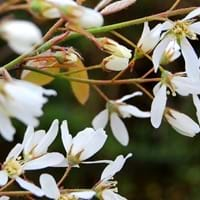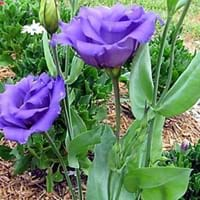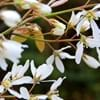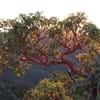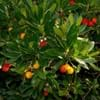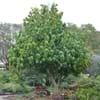Life Span
Perennial
Biennial
Origin
United States, Northeastern United States, Mid-Atlantic United States, Southeastern United States, Central United States, South-Central United States
Southwestern United States, Mexico
Types
shadbush, wild plum
Not Available
Number of Varieties
Not Available
Habitat
Swamps, Thickets, Woods
gardens, Grassland, River side
USDA Hardiness Zone
4-9
Not Available
Sunset Zone
2a, 2b, 3a, 3b, 4, 5, 6
21,22
Habit
Oval or Rounded
Upright/Erect
Flower Color
White
Blue, Lavender, Blue Violet
Flower Color Modifier
Bicolor
Bicolor
Fruit Color
Red, Violet, Plum
Non Fruiting Plant
Leaf Color in Spring
Green, Gray Green
Gray Green
Leaf Color in Summer
Green
Gray Green
Leaf Color in Fall
Yellow, Red, Orange, Orange Red
Gray Green
Leaf Color in Winter
Not Available
Light Green
Plant Season
Spring, Summer, Fall
Spring, Summer
Sunlight
Full Sun, Partial Sun
Full Sun, Partial Sun
Type of Soil
Clay, Loam, Sand
Clay, Loam, Sand
The pH of Soil
Acidic, Neutral, Alkaline
Neutral, Alkaline
Soil Drainage
Average
Well drained
Bloom Time
Spring
Spring, Late Spring, Early Summer, Summer, Late Summer
Tolerances
Not Available
Not Available
Where to Plant?
Ground
Container, Ground, Pot
How to Plant?
Grafting, Seedlings, Stem Planting
Seedlings, Stem Planting
Plant Maintenance
Medium
Medium
Watering Requirements
occasional watering once established
Keep the ground moist but not water-logged, Requires watering in the growing season, Water more in summer
In Summer
Drought Tolerant
Lots of watering
In Spring
Moderate
Moderate
In Winter
Less Watering
Average Water
Soil pH
Acidic, Neutral, Alkaline
Alkaline, Neutral
Soil Type
Clay, Loam, Sand
Clay, Loam, Sandy
Soil Drainage Capacity
Average
Well drained
Sun Exposure
Full Sun, Partial Sun
Full Sun, Partial Sun
Pruning
No need to prune, Prune if you want to improve plant shape
Remove damaged leaves, Remove dead branches, Remove dead leaves
Fertilizers
All-Purpose Liquid Fertilizer, Less fertilizing
All-Purpose Liquid Fertilizer
Pests and Diseases
Bacterial leaf spot, Beetles, Powdery mildew, Red blotch, Rust
Red blotch
Plant Tolerance
Drought, Heat And Humidity
Drought
Flower Petal Number
Single
Single
Foliage Texture
Medium
Medium
Foliage Sheen
Matte
Matte
Attracts
Birds, Deers, Hoverflies
Bees, Butterflies
Allergy
no allergic reactions
no allergic reactions
Aesthetic Uses
Not Used For Aesthetic Purpose
Beautification, Bouquets
Beauty Benefits
Improve skin condition, Not Available, Skin Problems
Not Available
Environmental Uses
Agroforestry, Food for animals, Food for birds, No fertilizer, pesticides, or herbicides needed, soil stabilisation
Air purification
Medicinal Uses
Diarrhea, Gastrointestinal disorders, Menstrual Disorders
No Medicinal Use
Part of Plant Used
Fruits
Flowers
Other Uses
Food for animals, Used As Food
Showy Purposes, Used as Ornamental plant
Used As Indoor Plant
No
Sometimes
Used As Outdoor Plant
Yes
Yes
Garden Design
Edible, Feature Plant, Foundation, Fruit / Fruit Tree, Mixed Border, Screening / Wind Break, Shade Trees
Cutflower, Edging, Feature Plant, Foundation
Botanical Name
AMELANCHIER arborea
EUSTOMA grandiflorum 'Florida Blue'
Common Name
Common Serviceberry, Downy Serviceberry, Juneberry, Shadbush
Florida Blue Lisianthus, Lisianthus
In Hindi
Juneberry
फ्लोरिडा Lisianthus
In German
Felsenbirnen
Florida Lisianthus
In French
Amélanchier
Floride Lisianthus
In Spanish
Amelanchier
lisianthus Florida
In Greek
Juneberry
Φλόριντα lisianthus
In Portuguese
Amelanchier
Florida Lisianthus
In Polish
Świdośliwa
Florida Eustoma
In Latin
Amelanchier
Florida Lisianthus
Phylum
Magnoliophyta
Not Available
Class
Magnoliopsida
Not Available
Order
Rosales
Gentianales
Family
Rosaceae
Gentianaceae
Genus
Amelanchier
Eustoma
Clade
Dicotyledonous
Angiosperms, Asterids, Eudicots
Tribe
Not Available
Not Available
Subfamily
Malvoideae
Paperveroideae
Number of Species
Not Available
Importance of Juneberry and Florida Lisianthus
Want to have the most appropriate plant for your garden? You might want to know the importance of Juneberry and Florida Lisianthus. Basically, these two plants vary in many aspects. Compare Juneberry and Florida Lisianthus as they differ in many characteristics such as their life, care, benefits, facts, etc. Every gardener must at least have the slightest clue about the plants he wants to plant in his garden. Compare their benefits, which differ in many ways like facts and uses. The medicinal use of Juneberry is Diarrhea, Gastrointestinal disorders and Menstrual Disorders whereas of Florida Lisianthus is No Medicinal Use. Juneberry has beauty benefits as follows: Improve skin condition, Not Available and Skin Problems while Florida Lisianthus has beauty benefits as follows: Improve skin condition, Not Available and Skin Problems.
Compare Facts of Juneberry vs Florida Lisianthus
How to choose the best garden plant for your garden depending upon its facts? Here garden plant comparison will help you to solve this query. Compare the facts of Juneberry vs Florida Lisianthus and know which one to choose. As garden plants have benefits and other uses, allergy is also a major drawback of plants for some people. Allergic reactions of Juneberry are no allergic reactions whereas of Florida Lisianthus have no allergic reactions respectively. Having a fruit bearing plant in your garden can be a plus point of your garden. Juneberry has showy fruits and Florida Lisianthus has no showy fruits. Also Juneberry is not flowering and Florida Lisianthus is not flowering . You can compare Juneberry and Florida Lisianthus facts and facts of other plants too.
